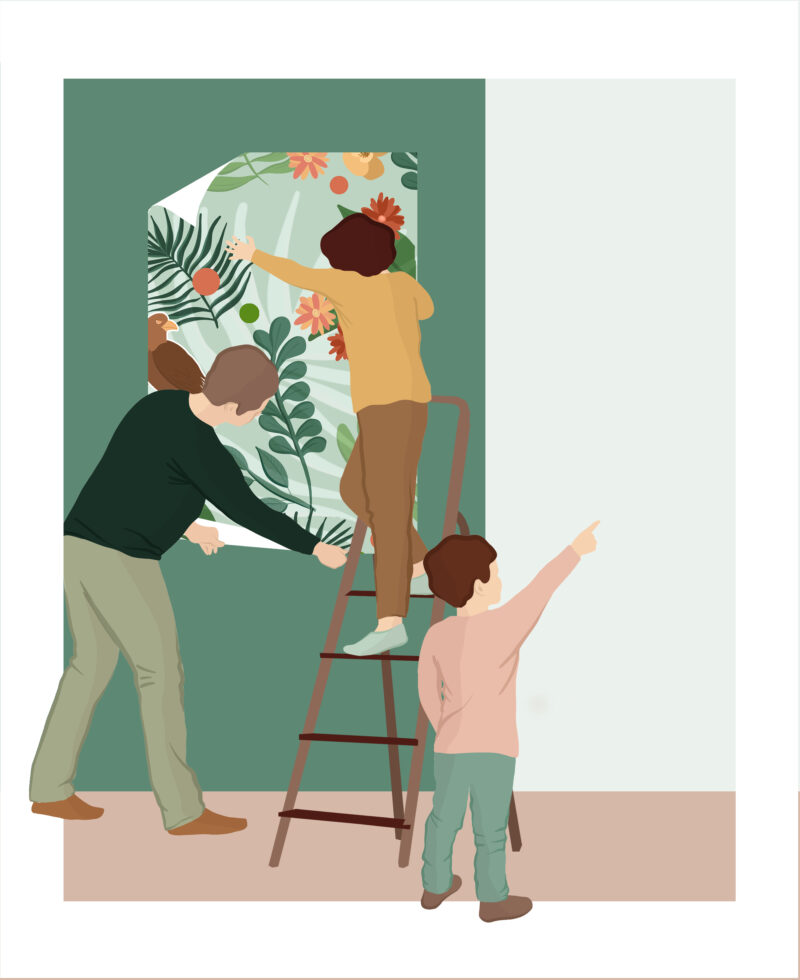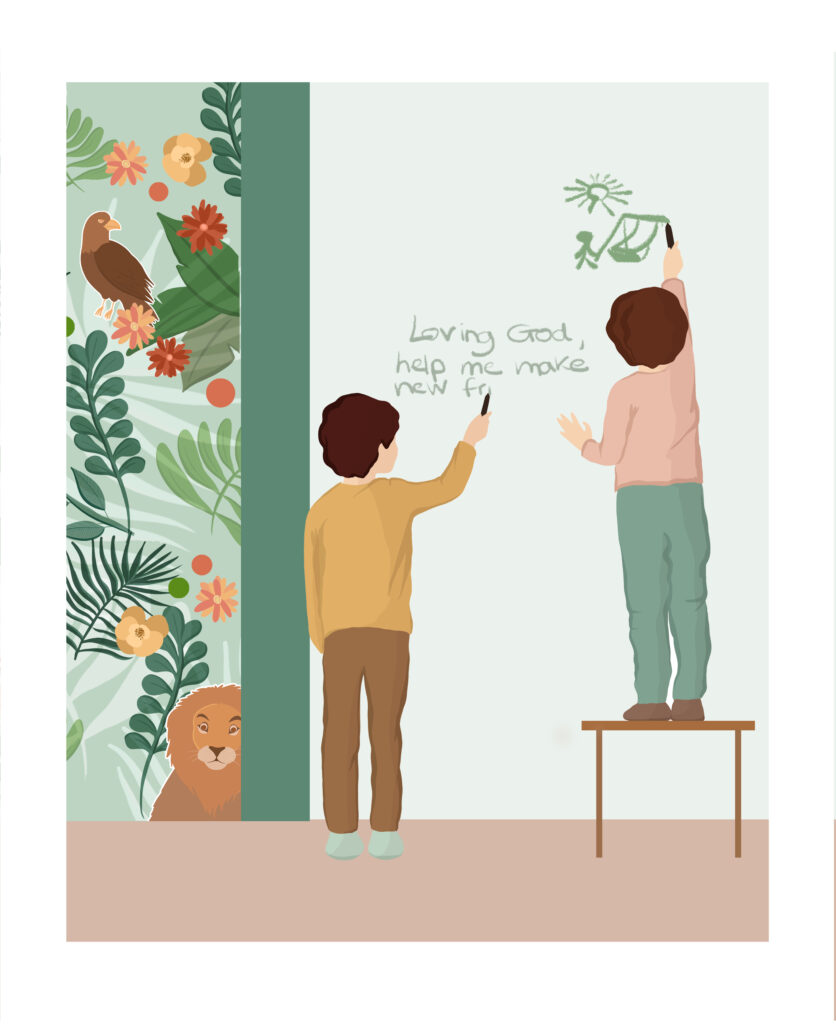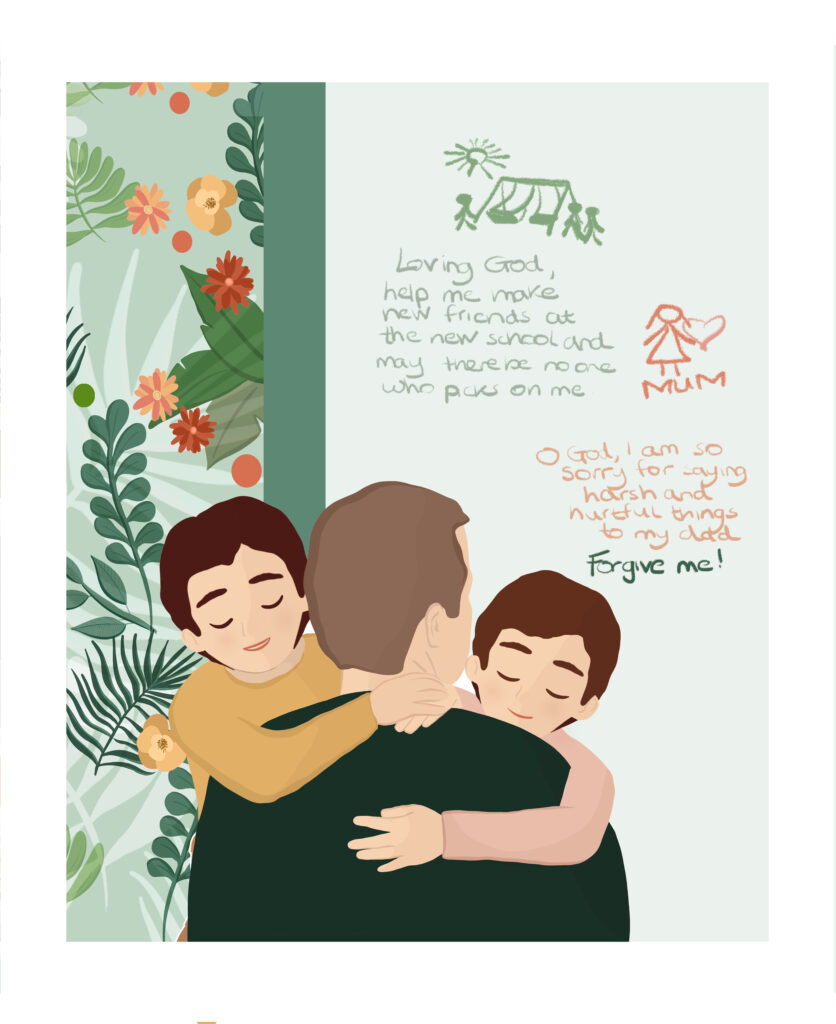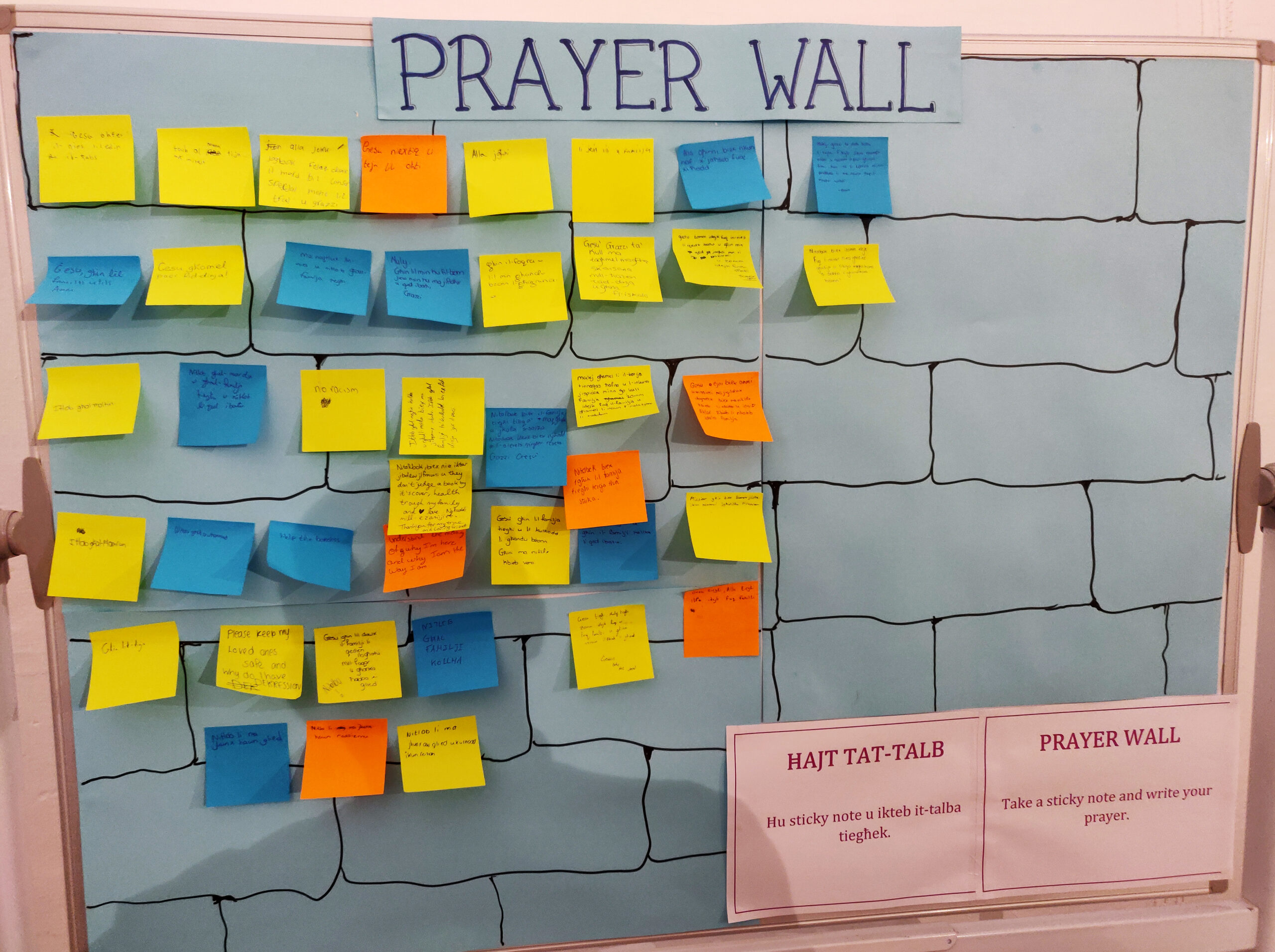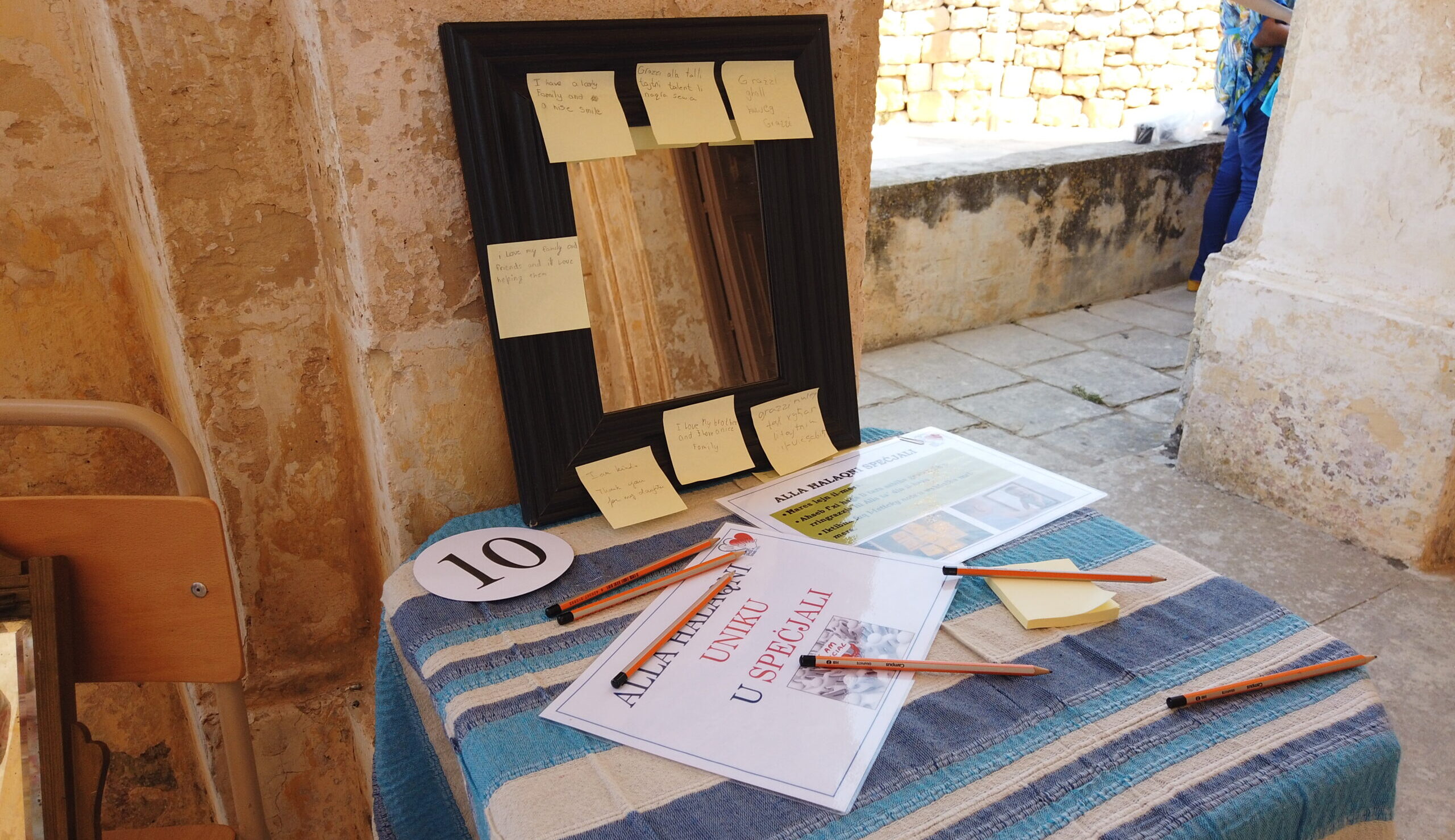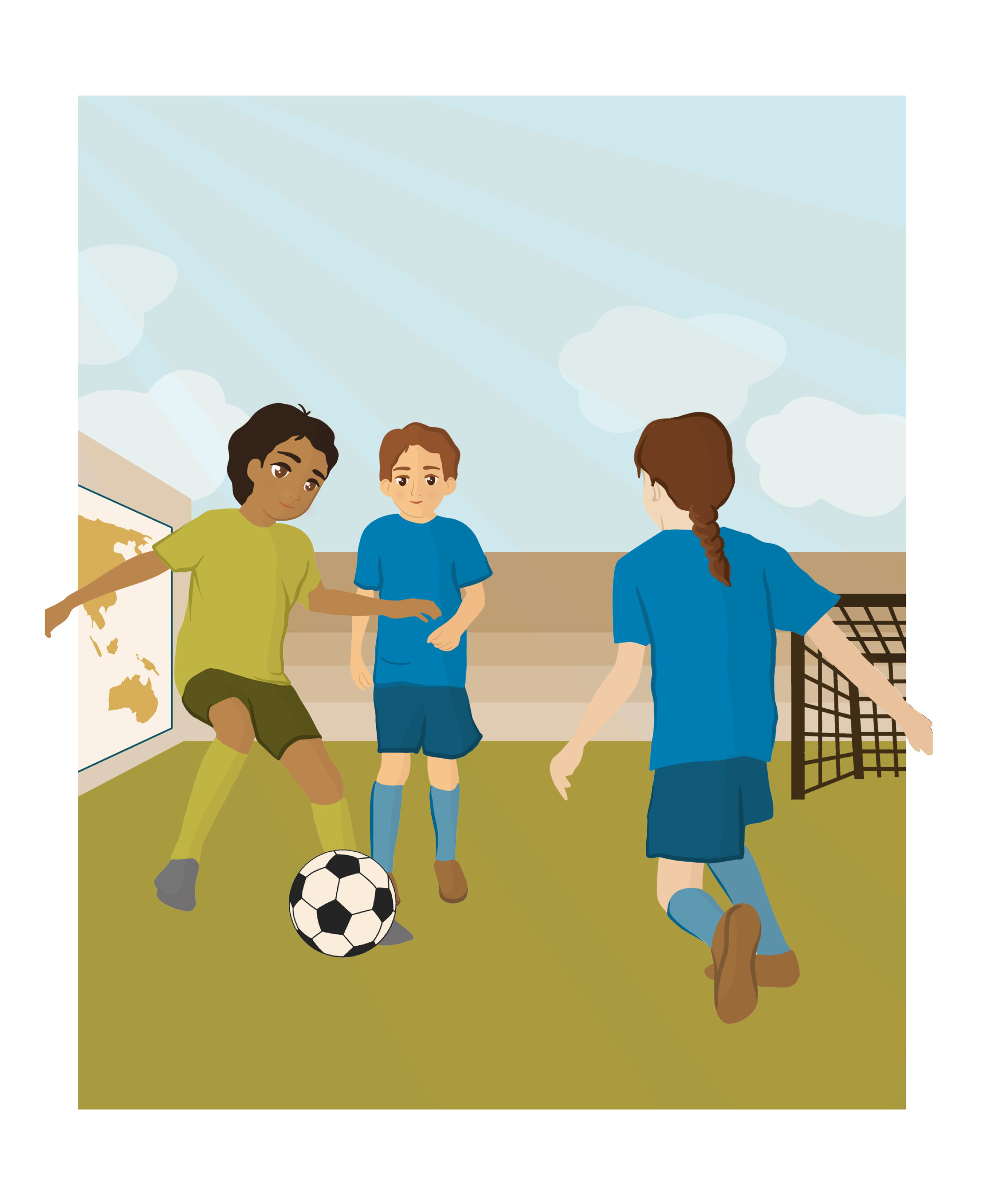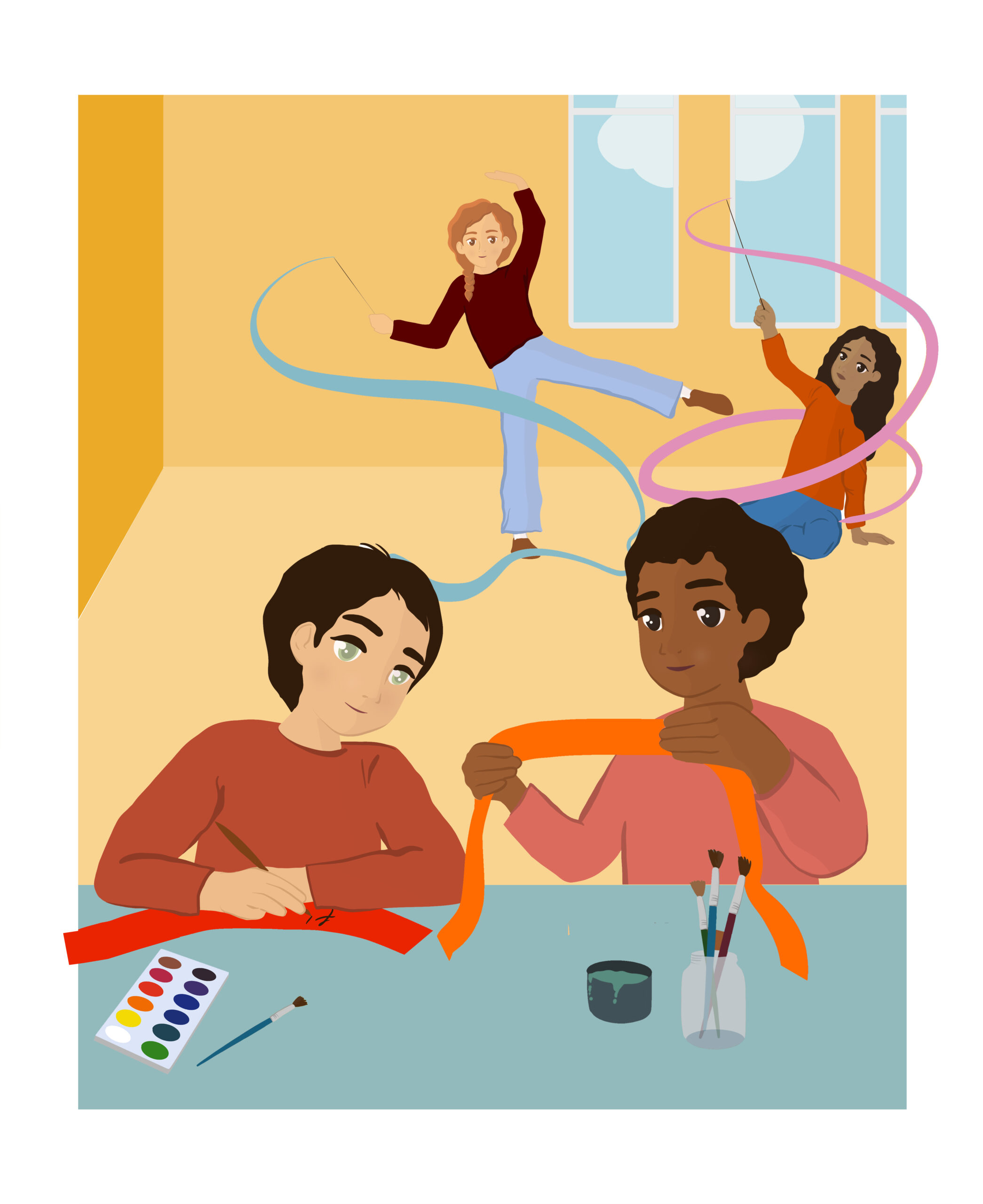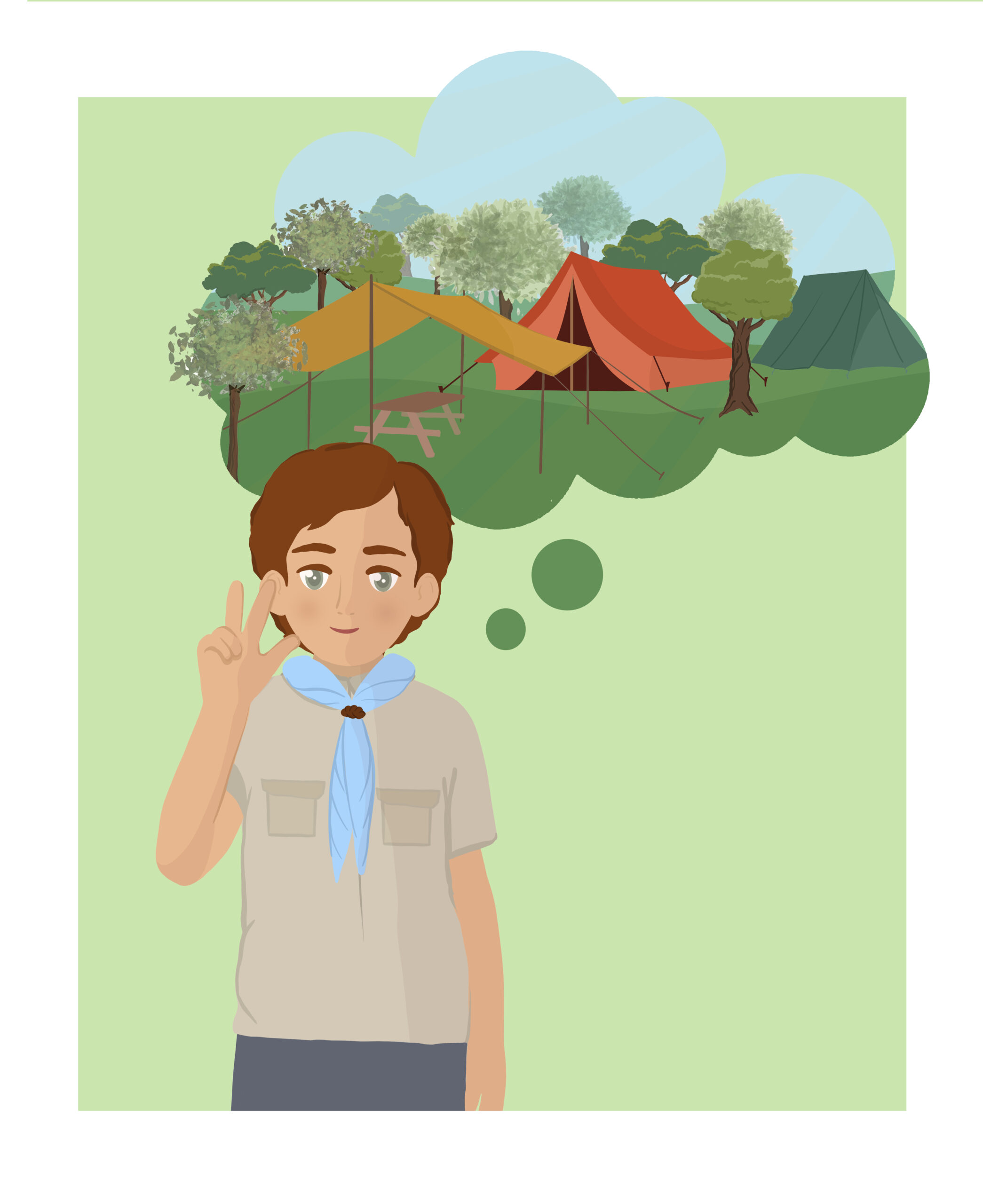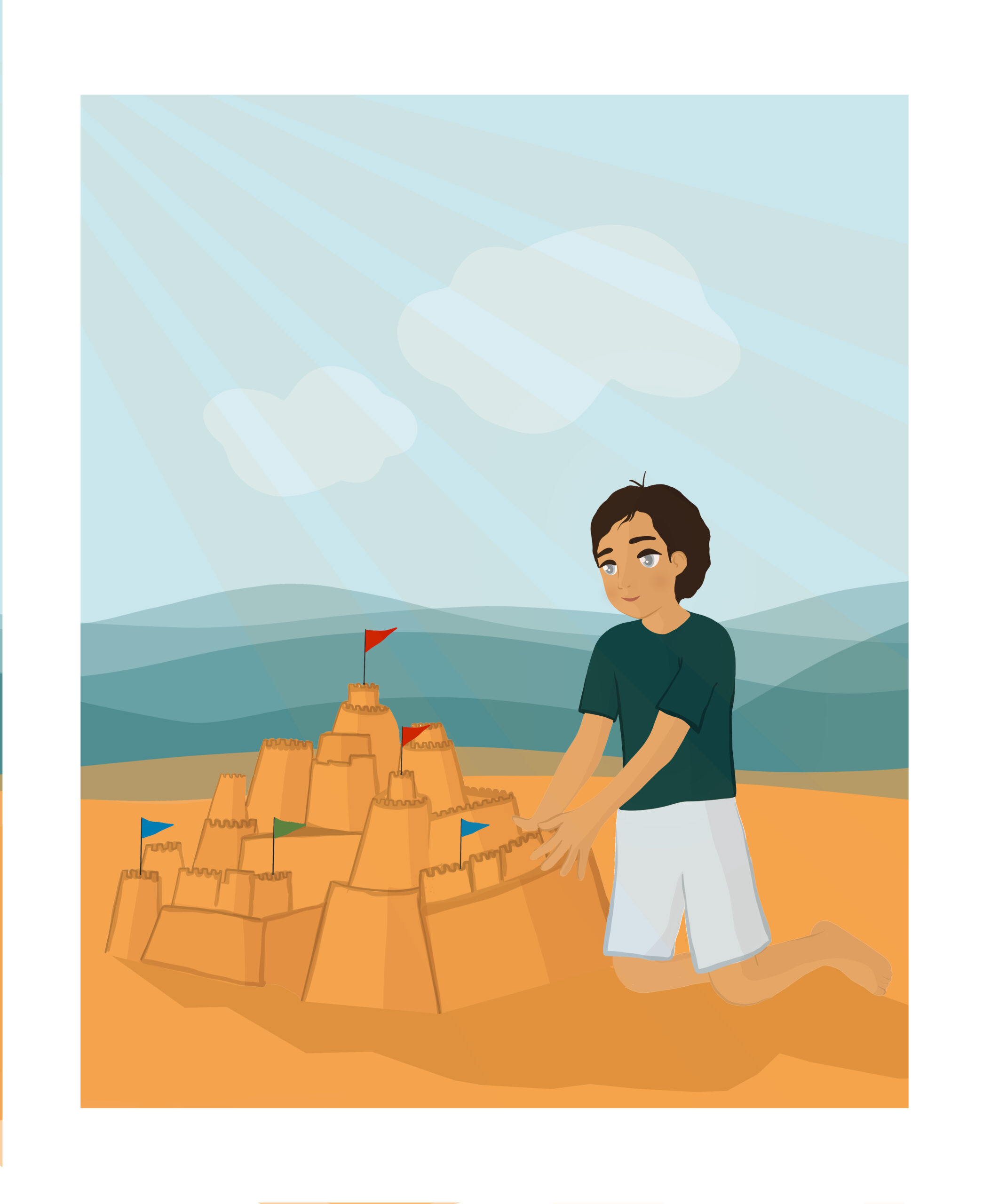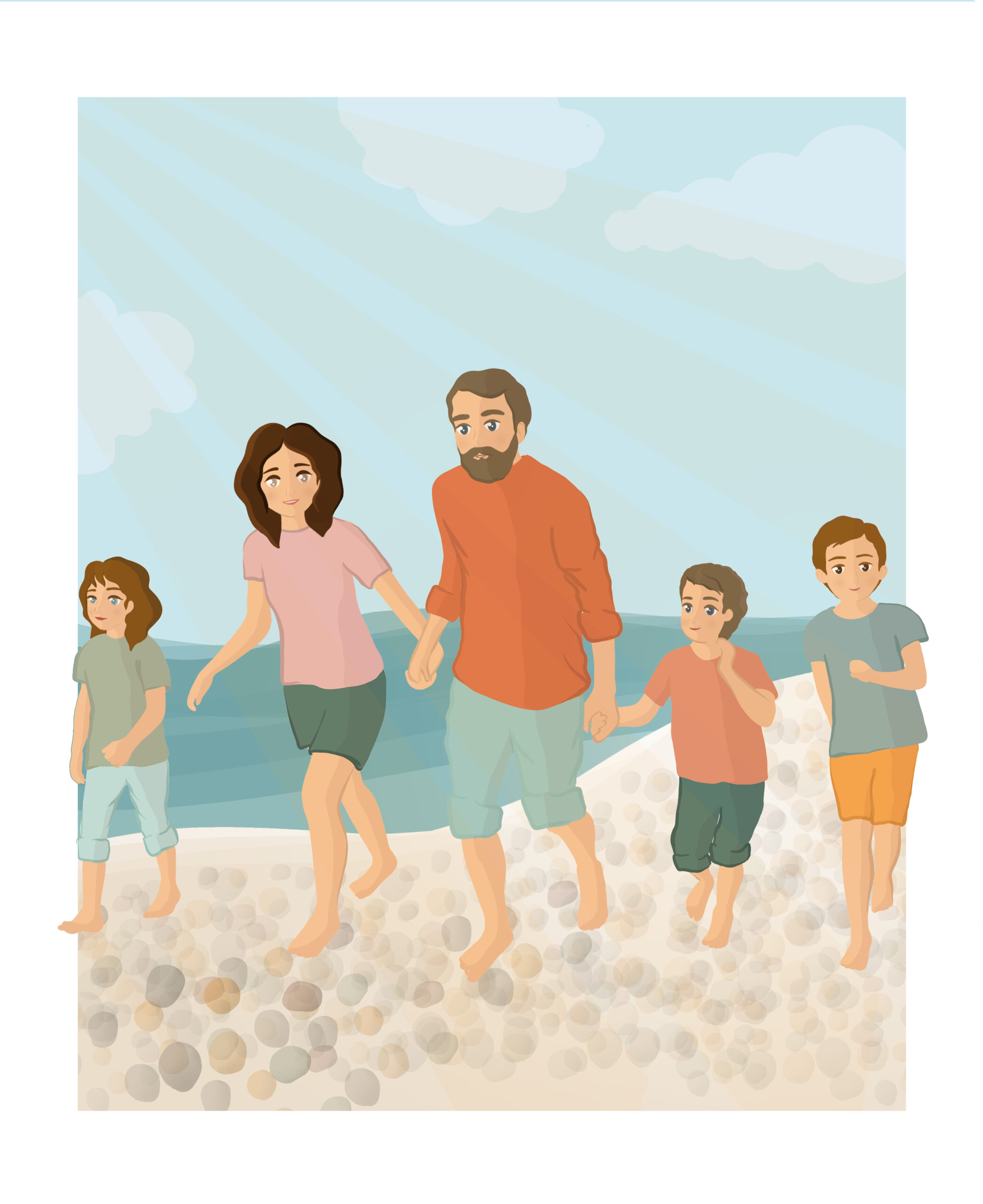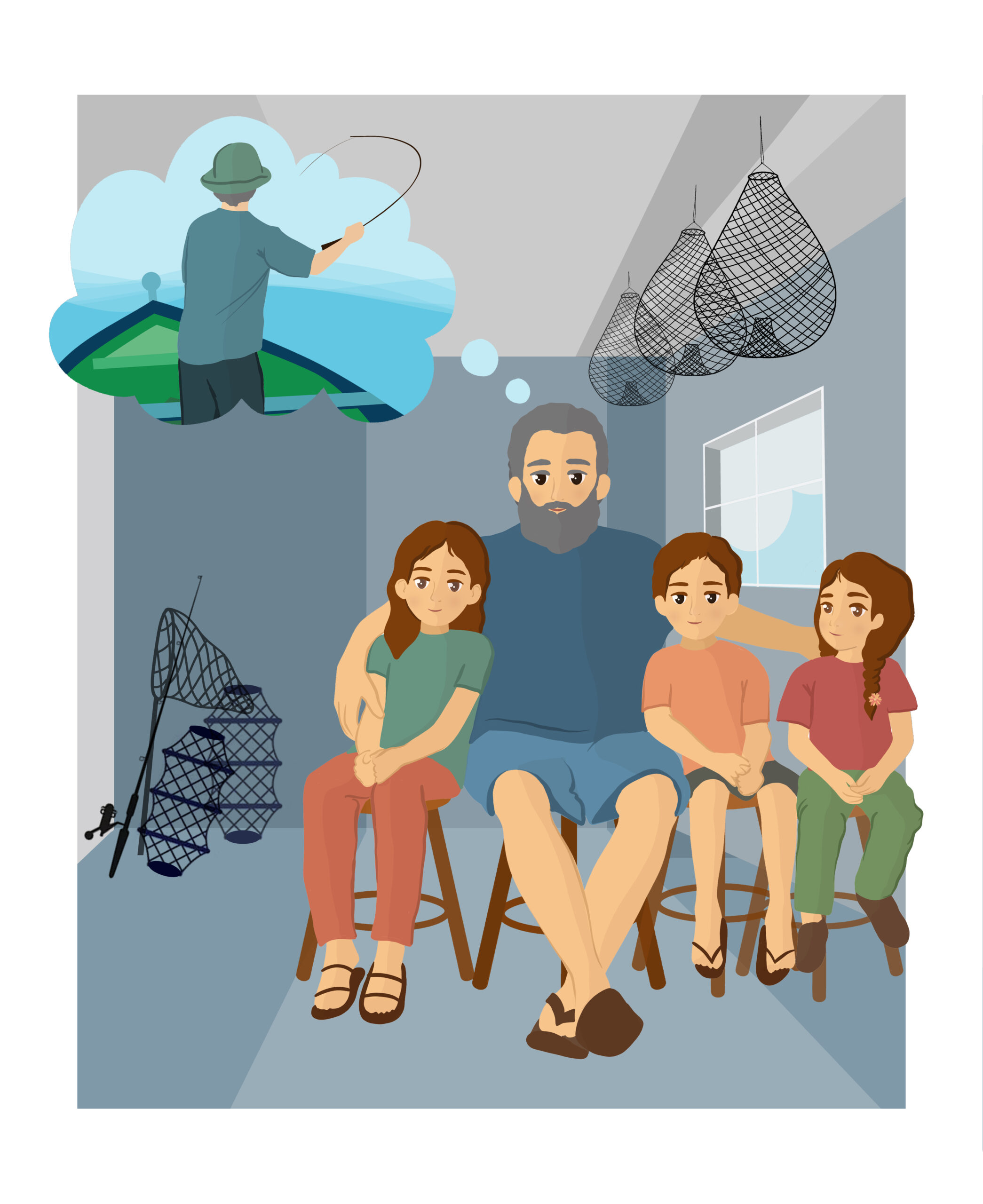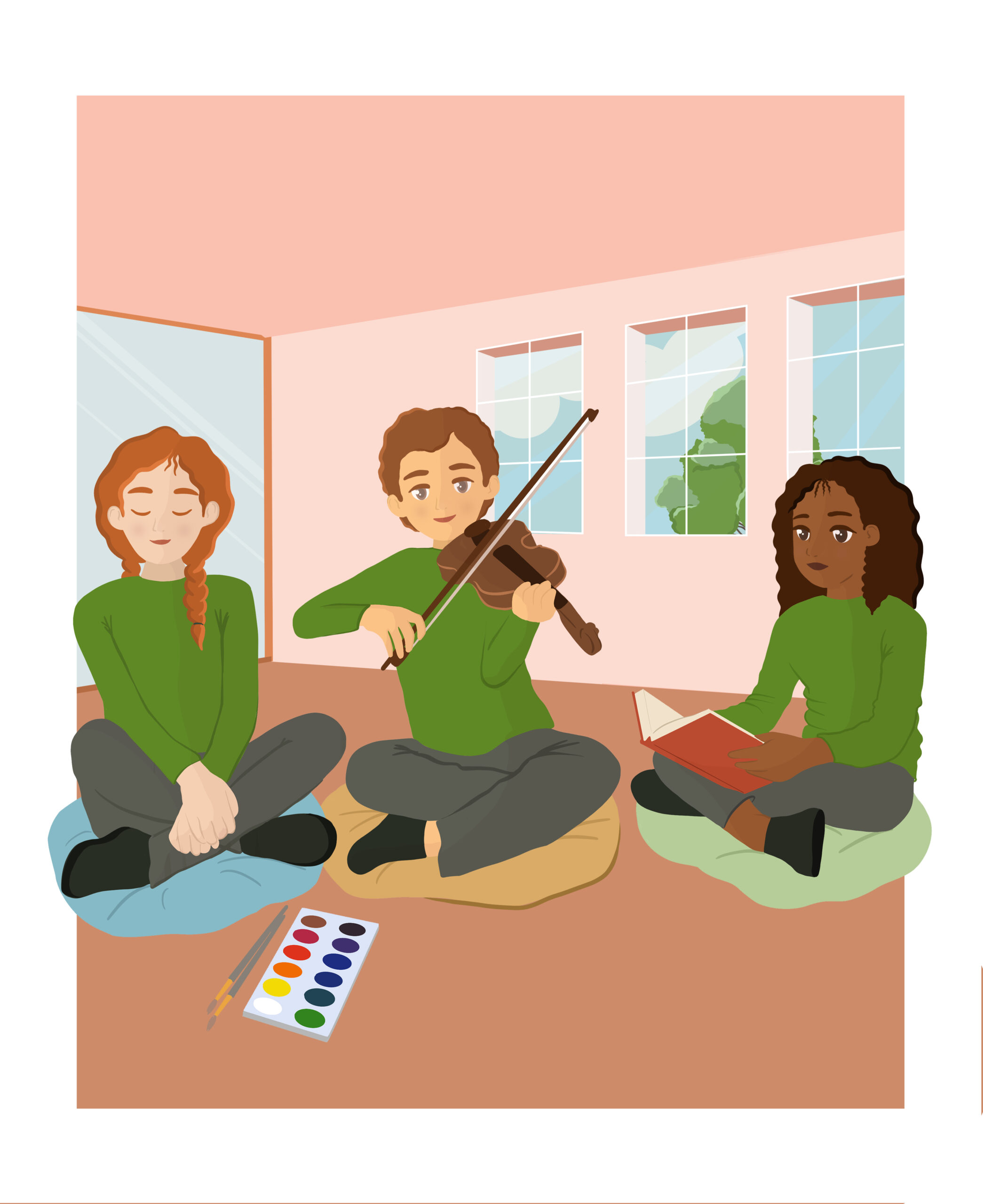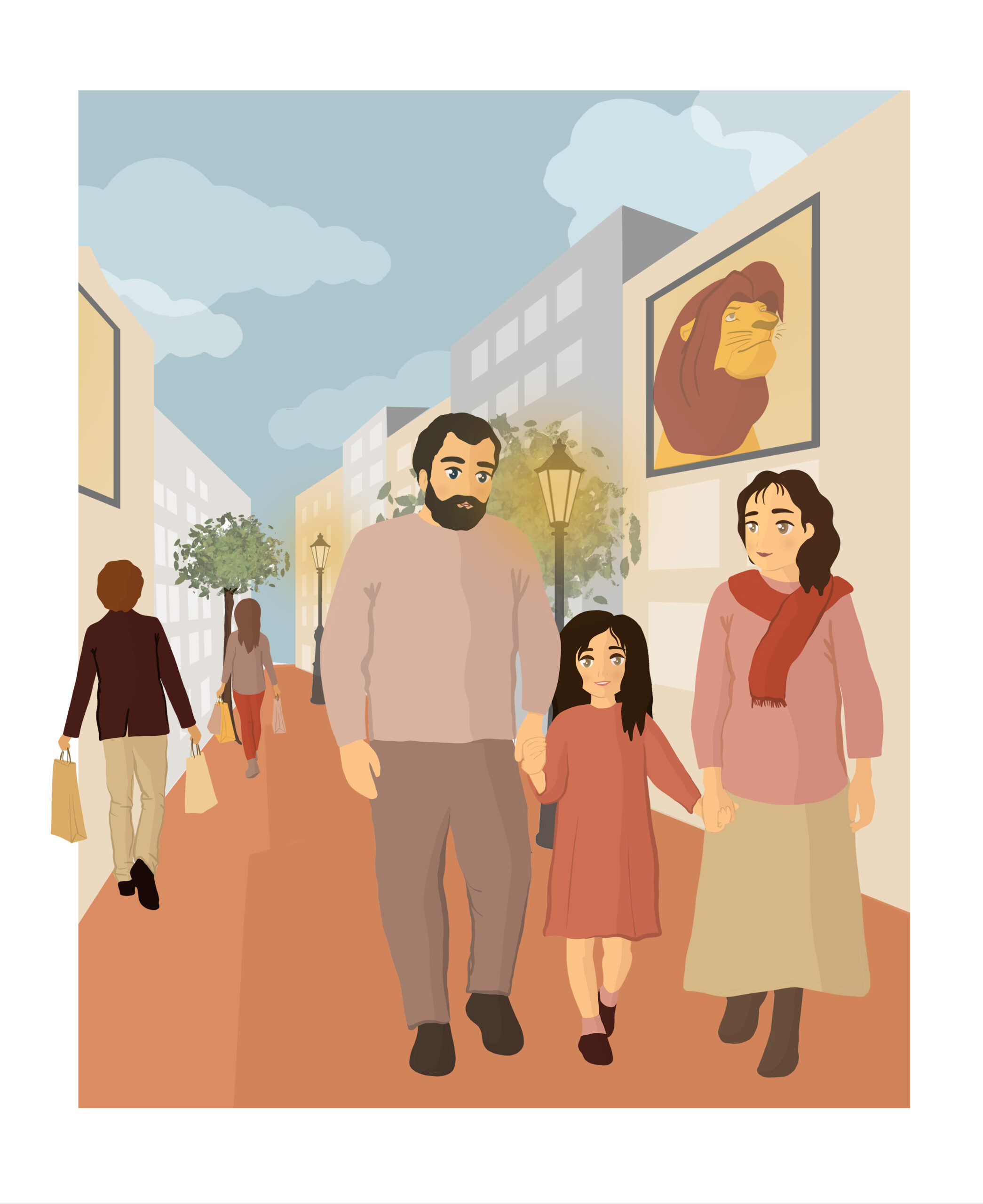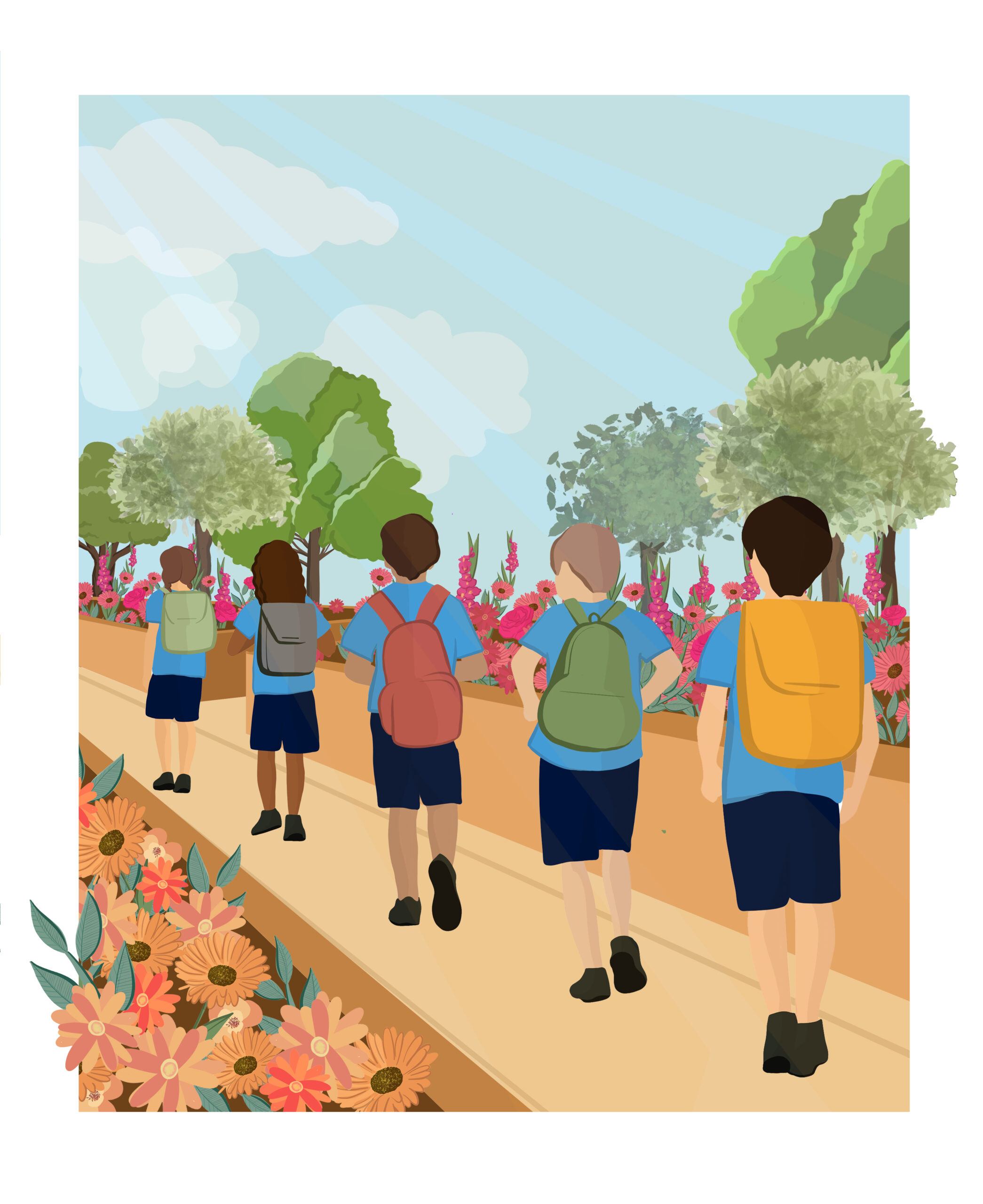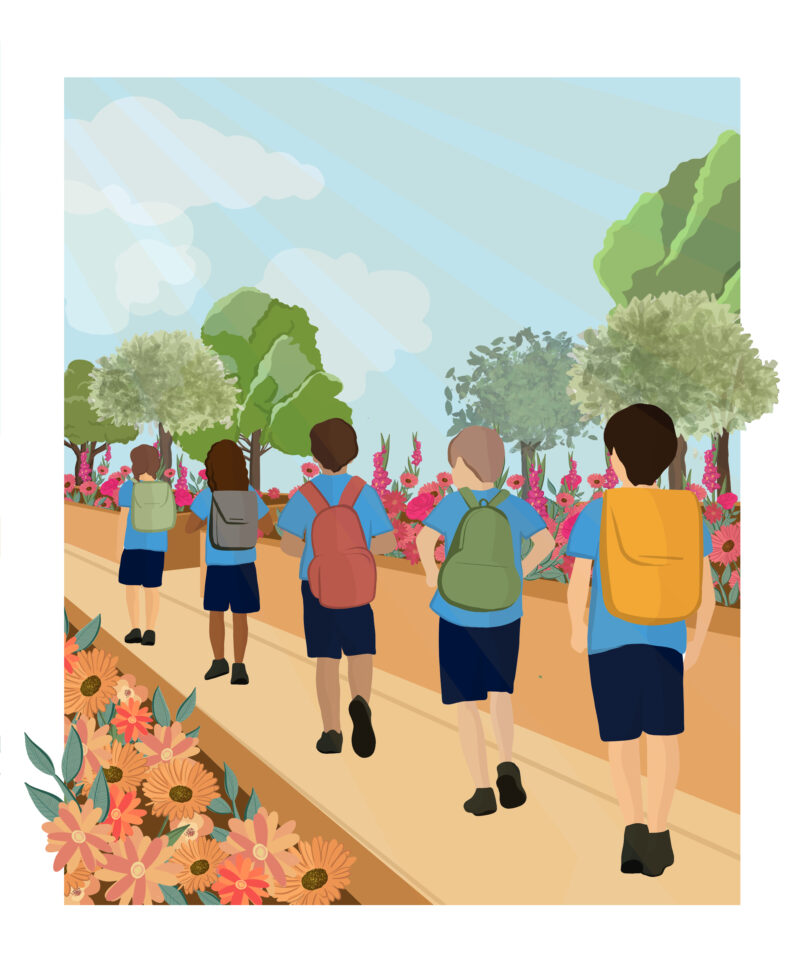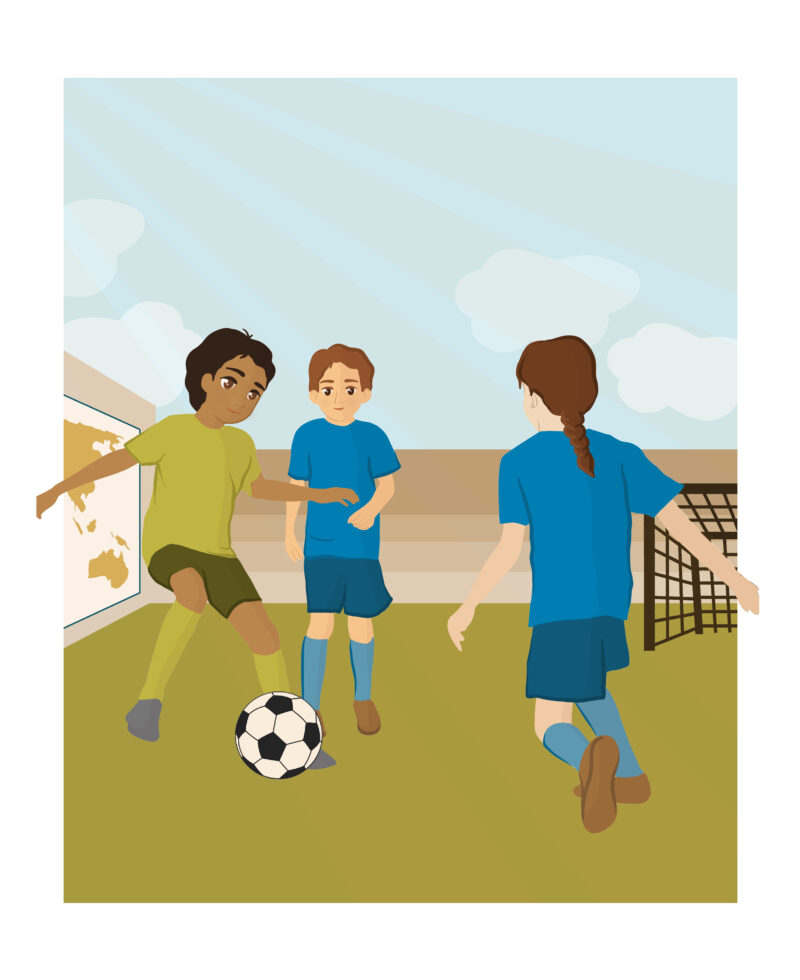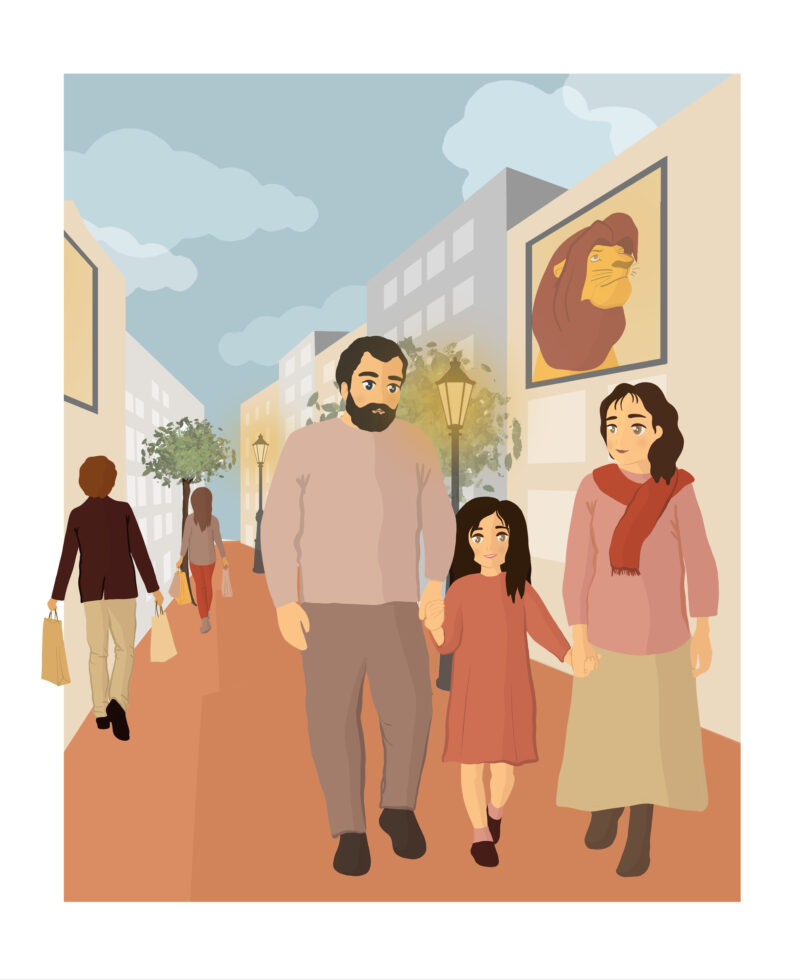The story is about two brothers who moved houses several times. In their new home, they decorated their bedroom wall with eye-catching wallpaper and then they painted a prayer wall on it.
Ages
- Primary Years
- Middle Years
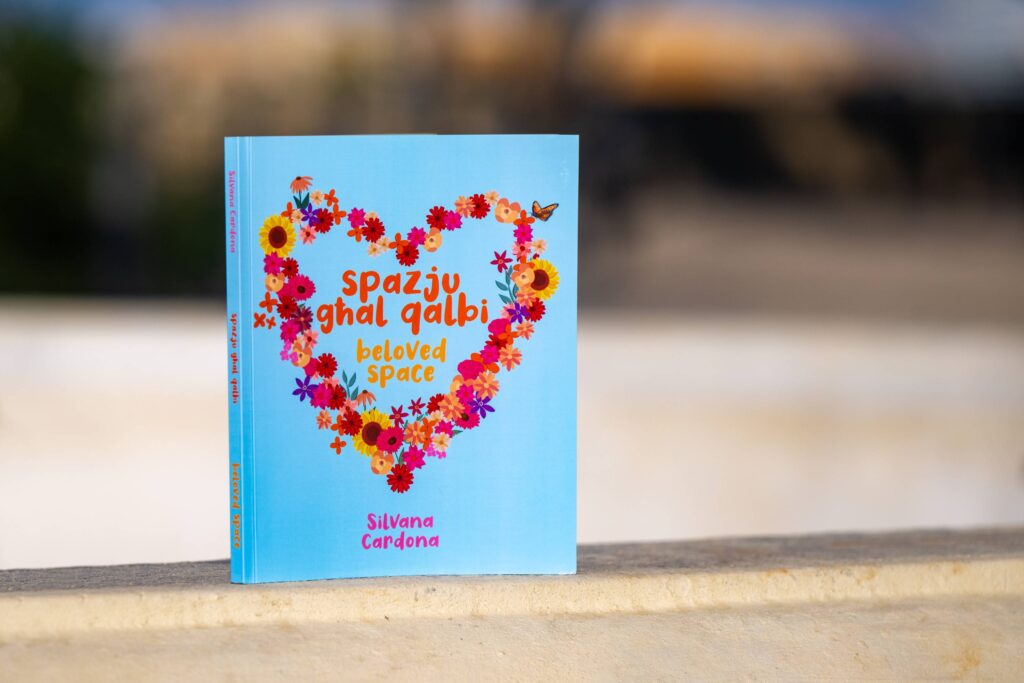
Wallpaper li Jiġbed l-Għajn
“Ma rridx nitlaq minn din id-dar jien. Għalfejn ser nerġgħu nitilqu minn din id-dar biex immorru noqogħdu f’dar oħra u f’post differenti? Hawn irrid nibqa’ ngħix jien. Nobogħdok! Itlaq ’l hemm,” beda jgħajjat Manwel waqt li beda jsabbat saqajh mal-art.
Manwel, li għandu disa’ snin, beda jgħid dan il-kliem iebes lil missieru għax kien qed iħossu rrabjat u mbeżża’ ħafna. Din hija t-tielet darba li hu u ħuh iż-żgħir ser jitilqu mid-dar tagħhom biex imorru jgħixu f’dar oħra.
L-ewwel darba kienet meta marru jgħixu man-nanna għal żmien twil sakemm il-mamà tagħhom kienet l-isptar għall-kura minħabba marda serja.
It-tieni darba li marru jgħixu f’dar oħra kienet wara l-mewt tal-mamà tagħhom.
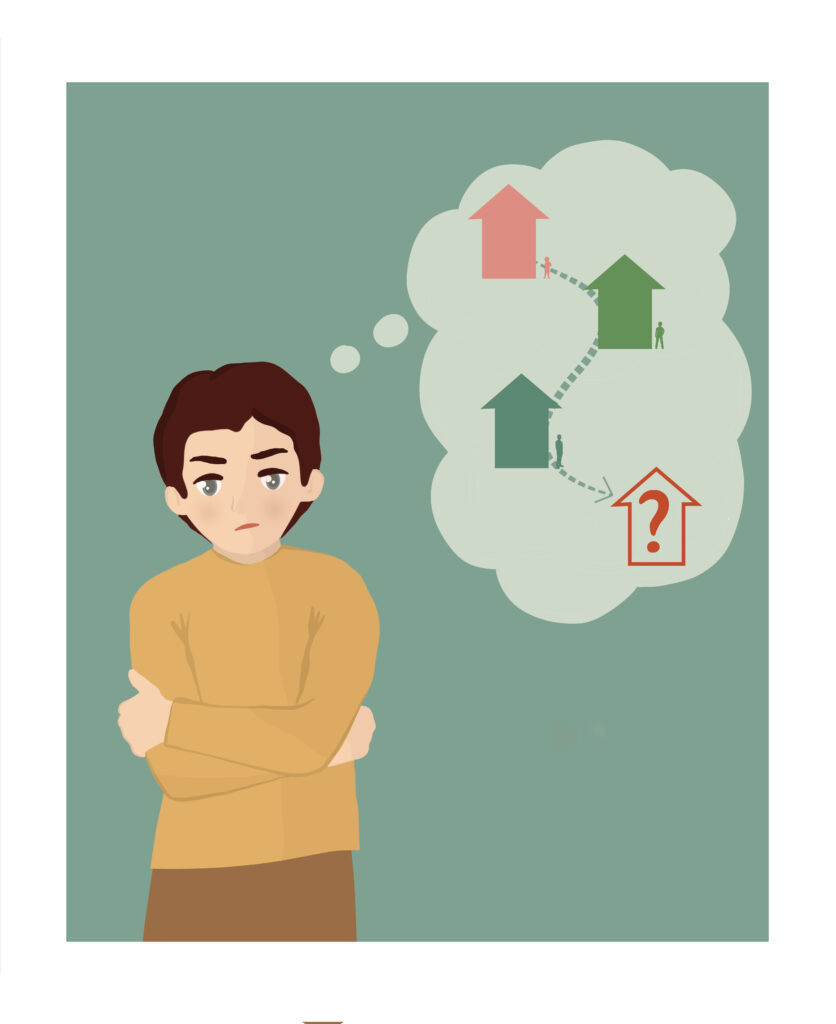
U issa ser jerġgħu jitilqu mid-dar biex imorru joqogħdu f’dar ġdida fil-kampanja qrib l-għelieqi u l-istalel taż-żwiemel li għandu l-papà tagħhom.
Manwel u ħuh ħassewhom imdejqin ħafna għax bdew jinkwetaw li fil-kampanja mhux ser jiltaqgħu ma’ tfal oħra tal-età tagħhom ma’ min jilagħbu, u li mhux ser ikollhom il-ħwienet favoriti tagħhom minn fejn jixtru ġelat u xi ikel li jħobbu huma. Beżgħu li fl-iskola l-ġdida li sejrin fiha ser ikun hemm min ma jifhimhomx meta xi drabi jmorru l-iskola bla ħobż, bl-uniformi xi ftit maħmuġa jew meta jkunu għajjenin ħafna.
Li jmorru joqogħdu f’dar differenti kienet tfisser li kellhom iħallu dak kollu li kienu diġà draw u jridu jerġgħu jadattaw lilhom infushom. Riedu jidraw jgħixu f’ambjent ġdid qalb l-għelieqi, jidraw is-sistema ta’ skola ġdida u riedu jagħmlu ħbieb ġodda.
Din l-esperenza kienet qed taffettwalhom l-iżvilupp u l-imġiba tagħhom kemm fid-dar kif ukoll l-iskola.
Missierhom, li kien iħobbhom ħafna, fehem il-għala kienu qed iħossuhom imdejqa u rrabjati. Beda jgħidilhom li hu wkoll kien ser iħoss in-nuqqas tal-ġirien ħbieb tiegħu. Huwa qawwielhom qalbhom u qalilhom li ser ikunu jistgħu jistiednu xi ħbieb ġodda mill-iskola l-ġdida li ser jattendu fiha u li ser ikunu jistgħu jiġu jilagħbu fl-għalqa magħhom u juruhom iż-żwiemel.
Biex aktar iferraħ lit-tfal tiegħu u għax jaf kemm huma kreattivi u mimlija enerġija, il-papà qalilhom ukoll li biex iħossuhom komdi u siguri fil-kamra tas-sodda l-ġdida tagħhom, jistgħu jiddekorawha kif jixtiequ huma.
Wiċċ it-tfal xegħel bil-ferħ kif semgħuh jgħidilhom hekk.
U staqsewh,“Pa, pa, nistgħu nwaħħlu wallpaper b’xeni ta’ annimali, tal-isports favorit tagħna, jew ta’ xi karattru tal-films li nħobbu?”
“Iva, mela, tistgħu,” weġibhom il-papà. Kif rahom daqshekk ferħana, dak il-ħin stess baqgħu sejrin għand tal-ħanut biex jixtru l-wallpaper.
Wara li xtrawhom, marru dritt id-dar il-ġdida. Kif waslu, niżlu mill-karozza, fetħu l-bieb tad-dar u daħlu sparati fil-kamra tas-sodda tagħhom. It-tfal fetħu roll wallpaper b’xeni ta’ annimali tal-ġungla u bl-għajnuna tal-papà bdew iwaħħluh ma’ parti tal-ħitan. Imbagħad fetħu roll wallpaper differenti b’xena ta’ briks u waħħluh mal-kumplament tal-ħajt.
Kif il-kamra kienet iddekorata lesta bil-wallpaper, il-papà refa’ liż-żewġ subien tiegħu, wieħed fuq kull id u bieshom waħda kbira filwaqt li qalilhom, “Araw kemm ġiet sabiħa l-kamra tagħkom! Issa nixtieqkom iġġibu marker tal-kulur favorit tagħkom u pinġu jew iktbu xi ħsieb sabiħ li tridu intom fuq il-wallpaper biss li għandu xena ta’ briks. Tajjeb?” staqsiehom il-papà hekk kif beda ħiereġ mill-kamra biex imur isajjar fil-kċina.
It-tfal għamlulu sinjal b’rashom li kollox sew u bdew ipinġu u jiktbu ħsibijiet sbieħ fuq il-wallpaper bix-xena ta’ briks.
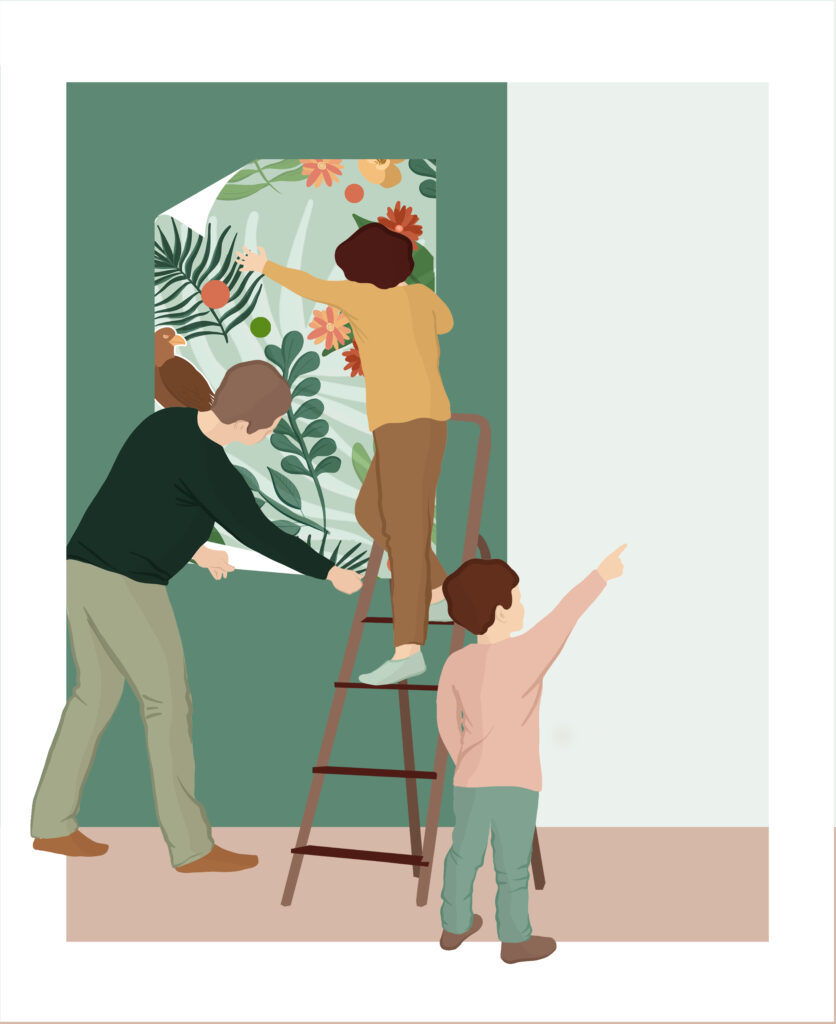
Manwel u ħuh iż-żgħir kitbu mhux biss ħsibijiet sbieħ imma kitbu dak li bdew iħossu ġewwa fihom f’forma ta’ talba lil Alla. Pinġew ukoll emojis biex jesprimu lilhom infushom u kif bdew iħossuhom.
Meta l-papà mar lura fil-kamra tagħhom, baqa’ impressjonat b’dak li esprimew uliedu fuq il-ħajt, kemm bil-kitba kif ukoll bit-tpinġija. Huwa faħħarhom ħafna u ħaddanhom miegħu.
Manwel, ferħan se jtir, qallu, “Ismagħni, pa, xi ktibt jien… O Alla, għinni nagħmel ħbieb ġodda fl-iskola l-ġdida u li ma jkun hemm ħadd li jaqbad miegħi. O Alla, jiddispjaċini meta ngħid kliem iebes u li jweġġa’ lill-papà tiegħi. Aħfirli.”
“U dawn it-tpinġijiet xi jfissru? staqsa l-papà.
Ħu Manwel iż-żgħir pront wieġbu, “Ara, pà, jien pinġejt lill-mamà għax qed inħoss ħafna n-nuqqas tal-mamà tiegħi. Nixtieq nitlob għaliha. U dawn huma bandli. Pinġejthom biex ngħid grazzi lill-ħbieb li kelli.”
“Bravi,” qalilhom il-papà.
Imbagħad il-papà ngħaqad magħhom ukoll u kiteb din it-talba, “O Alla, għin lil Manwel, lil ħuh iż-żgħir u lil tfal oħra bħalhom li għal raġuni jew oħra jkollhom iħallu d-dar tagħhom li jkunu draw jgħixu fiha. Agħtihom il-kuraġġ biex jibdew ħajja ġdida f’ambjent ġdid u għinhom jiffaċċjaw dak kollu li għad iridu jiltaqgħu miegħu.”
Il-missier fakkarhom li meta jħossuhom imdejqin, inkwetati, ferħanin jew għajjenin, jistgħu jesprimu lilhom infushom bit-tpinġija fuq dik il-wallpaper u jitolbu lil Alla jgħinhom.
Resources related to this story
We want to get to know you. To be able to bookmark your favourite content, please log in or sign up below.
User Sign Up
Discover more resources



